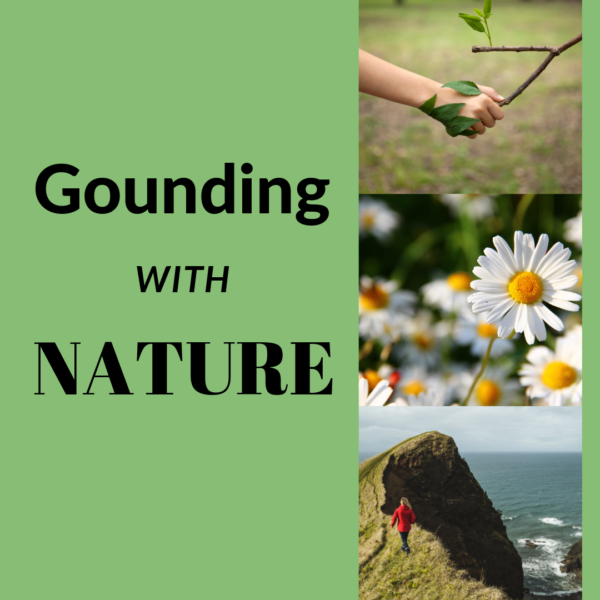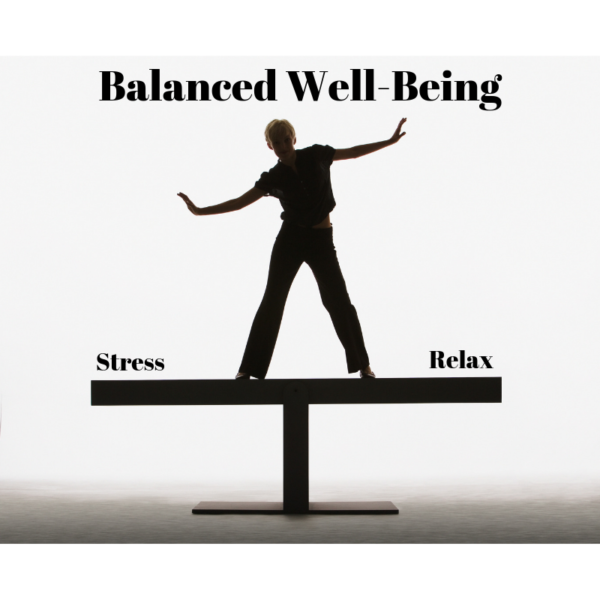Nature
So much of our world is filled with the hustle and bustle of work and socialization. Many of us live in cities, where in place of lush trees with dancing leaves we see gleaming towers reach into the sky. Cites often have only small pockets of greenery. These often come in the forms of a park or school yard, small trees dotting the streets, or even the occasional community garden. Our bodies and minds crave nature and greenery. We see this craving through the effects of nature on our health. Exposure to nature throughout our days helps our minds and bodies de-stress, thus making us more grounded.
How is being in nature more healthy?
For starters being outdoors usually is coupled with physical activity. Playing sports on a field, horseback riding on a trail, or hiking are all activities that are often performed outside where we see a mixture of plants and trees. Most of the time we hear that physical activity is excellent for your health. For example, “…a 160-pound adult burns between 430 and 440 calories per hour of hiking. Contrast that with 550 calories burned per hour for someone who weighs 200 pounds, and you can see that the more you weigh, the more calories you’ll ultimately burn.” (Google, Jul 23, 2018) The good exercise that comes from the physical activity is coupled with another interesting effect of nature on our well-being. We also see healing in the brain as well. “Researchers from the University of British Columbia found that aerobic exercise increases hippocampal volume — the part of the brain associated with spatial and episodic memory — in women over the age of 70.” (2) Outdoor exercises like hiking not only prevents memory loss but improves the mind where memory loss has occurred. Researchers also discovered that it can reduce mental fatigue, boost self esteem, as well as release endorphins. Endorphins trigger positive feelings and help us feel less stressed. An example is what is often referred to as a ‘runner’s high’ or ‘hiker’s high.’ This is the feeling we feel that follows a run, hike or other workout that’s often described as euphoric. This feeling is accompanied by a positive and energizing outlook on life.
The effects of nature and our emotional health…
Simply put when we interact with, see images or hear sounds from nature we feel less stressed and become more grounded. This creates a variety of positive outcomes, one of which is stress reduction. ’Nature’ experienced in any form including wilderness backpacking, gardening, viewing images of nature, restoring ecosystems, and simply having greenery outside your home has been linked to superior attention, effectiveness and outcomes of decisions. An article published by Sage Articles titled Healthy Workplaces: The Effects of Nature Contact at Work on Employee Stress and Health, the authors found that connecting with nature was beneficial even in an office setting. “Adding indoor plants, opening blinds or going outside for a work break instead of to the break room, for example, are straightforward ways to increase healthy exposures… to combat stress and promote health.” (5) This is why we see plants (real or fake) in offices, hospital rooms, restaurants, etc.
The form of interaction with nature matters too. “The most direct nature contact—outdoor nature contact—had the strongest association with stress reduction and health.” (5) The more employees had exposure to nature at work (i.e. office plants, pictures, and or sounds on nature) the less stress symptoms they exhibited. Whereas the most direct form of contact with nature, like taking a break or lunch in the park, resulted in the most improvement in emotional fortitude.
Mental fortitude
When we mention mental fortitude, de-stressing or grounding we mean that the mind actually stops negative and or obsessive thoughts and opens up bandwidth for creative problem solving. “A recent study published in Proceedings of the National Academy of Sciences found that spending time in nature decreases these obsessive, negative thoughts by a significant margin…To conduct this study, researchers compared the reported rumination of participants who hiked through either an urban or a natural environment. They found those who walked for 90 minutes in a natural environment reported lower levels of rumination and they also had reduced neural activity in the subgenual prefrontal cortex, an area of the brain related to mental illness. Those who walked through the urban environment, however, did not report decreased rumination.” (2) In the article titled Creativity in the Wild: Improving Creative Reasoning through Immersion in Natural Settings, Ruth Ann Atchley, David L. Strayer, and Paul Atchley agree with this statement: “One suggestion is that natural environments, like the environment that we evolved in, are associated with exposure to stimuli that elicit a kind of gentle, soft fascination, and are both emotionally positive and low-arousing. It is also worth noting that with exposure to nature in decline, there is a reciprocal increase in the adoption of, use, and dependency upon technology. Thus, the effects observed here could represent either removal of the costs associated with over-connection or a benefit associated with a return to a more positive/low-arousing restorative environment.” (1)
Remember the opening imagery we talked about at the beginning of this blog? Tall buildings versus trees is different according to our brain chemistry. This makes sense since most of human existence has been in a more rural setting. So our brains recognise nature and greenery as familiar and thus is calming to our minds and bodies. The introduction of urban scenery is new. Therefore this is foreign to our ‘lizard brains,’ which causes a boost in our stress hormones like adrenaline. An article by Ian Johnston titled, Human brain hard-wired for rural tranquillity. This study of brain activity shows the struggle to process complex urban landscapes. The article talks about this mental process. “The study, which used an MRI scanner to monitor brain activity, adds to a growing body of evidence that natural environments are good for humans, affecting mental and physical health and even levels of aggression.” (3) While studying these MRI images it can be seen that areas of the brain where we see calm, meditative states lite up when subjects see pictures of rural settings. The inverse happens when images of urban environments are shown to the people, which “…resulted [sic.] in a significant delay in reaction, before a part of the brain involved in processing visual complexity swung into action as the viewer tried to work out what they were seeing.” (3) With the delay in recognition and increase in activity to resolve the dissonance we can deduce that the stress was not reduced in these people. But let’s turn back to the matter at hand. Seeing and interacting with nature is calming, healthy, and allows for the mind to be more productive.

A calm minds makes for a more productive mind…
Let’s take hiking as an example of connecting and being immersed in nature. While hiking, we usually don’t focus on daily tasks, future work meetings, or are fully conscious of our thoughts. This can be a form of moving meditation. This meditation allows for your mind to recover and de-stress while your body is getting a good workout as well as pumping the ‘feel good’ hormones through your system. As in other blogs we have posted, like Meditation: A Tool for Self-Care, meditation is a great tool for self-care. This tool allows for the mind to create space to solve problems creatively and with less effort. Specifically doing physical activities like hiking while disconnected from technology boosts our ability for creative problem solving. “A study conducted by psychologists Ruth Ann Atchley and David L. Strayer found that …participants in this study [who] went backpacking through nature for about 4 days, during which time they were not allowed to use any technology whatsoever… preformed better at tasks that require creative thinking and complex problem solving…by 50% for those who took part in this tech-free hiking excursion.” (2) These results could be due to the fact that most people find technology and urban noise disruptive. The beeps of our tech-savvy lives constantly demand our attention. This prevents us from focusing and can be taxing to our cognitive functions. How many times do we reach for our phones when they beep for whatever messages have arrived? This noise breaks our attention, which is already taxed as it is.
Improving attention through connecting with nature.
A prime example of reduced attention can be seen in the epidemic of diagnoses of ADHD in children. “Attention-deficit/hyperactivity disorder (ADHD) is the most common neurobehavioral disorder of childhood. It manifests as an unusually high and chronic level of inattention, impulsivity/hyperactivity, or both, and it may affect more than 2 million school-aged children.” (4) But there is good news we would like to share with you! When it comes to grounding yourself and your kids in nature, nature helps calm the mind and allow for better focus and attention. Sara Burrows writes in her article, Study: Kids Who Grow Up Surrounded By Nature Become Happier Adults, “Children who grew up with the lowest levels of residential “green space” had up to 55% higher risk of developing a psychiatric disorder…The results were also “dosage dependent” — the more of one’s childhood spent close to greenery, the lower the risk of mental health problems.” (6) An article published by Collective Evolution echoes this when they write about how the outdoors, specifically hiking can improve ADHD in kids. “A study conducted by Frances E Kup, PhD, and Andrea Faber Taylor, PhD, found that exposing children with ADHD to “green outdoor activities” reduces symptoms significantly. The results of this study suggest nature exposure can benefit anyone who has a difficult time paying attention and/or exhibits impulsive behavior.” (2)
The article by Frances E. Kuo, PhD and Andrea Faber Taylor, PhD, reports the results of a study exploring a possible new treatment for ADHD. The findings suggest that common weekend and after-school outdoor activities in relatively natural environments may be effective in reducing ADHD symptoms. “Indeed, the symptoms of ADHD and “attention fatigue” so closely mirror each other that the Attention Deficit Disorders Evaluation Scale has been used as a measure of attention fatigue. However, unlike ADHD, attention fatigue is proposed to be a temporary condition; when the deliberate attention mechanism has an opportunity to rest, fatigue dissipates and behavior and performance improve.” (4) We can attribute the improvement and recovery from the attention/mind fatigue to the amount of time spent in nature because the mind is engaged more effortlessly. This also “…may in part reflect a systematic restorative effect on directed attention.” (4) When researchers observe the brain in non-ADHD populations, the right prefrontal cortex is where we see both attention fatigue. This is also where the capacity to deliberately direct attention exists. Multiple studies have provided evidence of a right frontal–cortical locus of attention control, and/or that the right prefrontal cortex is subject to fatigue after sustained demands on directed attention. “Correspondingly, the right prefrontal cortex has been implicated in ADHD. The right prefrontal cortex has been found to be smaller and less active among children with ADHD than among same-aged peers, and severity of ADHD symptoms has been shown to be proportional to the degree of asymmetry between left and right prefrontal cortex regional cerebral blood flow.” (4) Here we can see that the two issues, ADHD and attention fatigue may lie in the same underlying mechanism.

Studies focusing on kids professionally diagnosed with ADHD ages 7 to 12 years to date have examined the impact of exposure to nature. In one study, parents rated leisure activities as to whether their child’s symptoms were better, worse, or no change after engaging in outdoor activities, as well as “…the general severity of their child’s symptoms and provided information on the “greenness” of the child’s typical play settings.” (4) Results from this study indicate that ADHD symptoms were less or better than usual after being outdoors. Moreover, these after-effects from green/outdoor activities were in direct proportion with the form of nature. (i.e. the greener and closer to nature, the better.) This seems to be in line results in regards to grounding and de-stressing in adults after interacting with nature. The correlation between this data precludes a strong connection between the role of nature and reducing attention deficit symptoms.
Overall, grounding while in nature is good for everyone!
We can see how good it is to surround ourselves and interacting with nature on a daily basis. We improve not only physical health, but mental and emotional health as well as our ability to focus and solve problems creatively. It is also good to know that the form and degree of closeness to nature that helps amplify these benefits. If we set more time aside to care for plants, eating lunch in the park, or go on hikes we will see increases to our health.
If you would like to read more blogs, Unified Caring Association has more blogs like ‘R’ is for Reforestation, A UCA Member’s Personal Well-Being Journey, and Starting Steps to Self-Care. Or if you would like a dose of caring and cheer in your day? Follow us on Pinterest, Tumblr, Twitter, and Instagram!
Works Cited:
- Atchley, R. A., Strayer, D. L., & Atchley, P. (2012, December 12). Creativity in the Wild: Improving Creative Reasoning through Immersion in Natural Settings. Retrieved July 18, 2019, from https://journals.plos.org/plosone/article?id=10.1371/journal.pone.0051474
- C. E. (2017, February 11). Doctors Explain How Hiking Can Actually Change Our Brains. Retrieved July 18, 2019, from https://wisemindhealthybody.com/collective-evolution/doctors-explain-hiking-can-actually-change-brains/?fbclid=IwAR2kpdtR-qECT8-fxRkY8wdB5N8QM6qZ-EGZ99FeSzZp2zaV7agPLI-lc5s
- I. J. (2013, December 11). Human brain hard-wired for rural tranquillity. Retrieved July 18, 2019, from https://www.independent.co.uk/news/science/human-brain-hard-wired-for-rural-tranquillity-8996368.html?fbclid=IwAR3DBJ-Zo1e6e2wRFTGBhN01XoH9OyTVWyx0V6_Pzf_9UzjqPrppXiAm1Fg
- Kuo, F. E., & Taylor, A. F. (2004, September). A potential natural treatment for attention-deficit/hyperactivity disorder: Evidence from a national study. Retrieved July 18, 2019, from https://www.ncbi.nlm.nih.gov/pmc/articles/PMC1448497/
- Largo-Wight, E., Chen, W. W., & Weiler, R. (2011, May 1). Healthy Workplaces: The Effects of Nature Contact at Work on Employee Stress and Health – Erin Largo-Wight, W. William Chen, Virginia Dodd, Robert Weiler, 2011. Retrieved July 18, 2019, from https://journals.sagepub.com/doi/abs/10.1177/00333549111260S116
- S. B. (2019, March 22). Study: Kids Who Grow Up Surrounded By Nature Become Happier Adults. Retrieved July 18, 2019, from https://returntonow.net/2019/03/22/study-kids-who-grow-up-surrounded-by-nature-become-happier-adults/?fbclid=IwAR2aJAtu1JXpbxe9miYzTeG6-IYpeAeJgYiFMTaviCgaYp5PVDepFAvfXok




